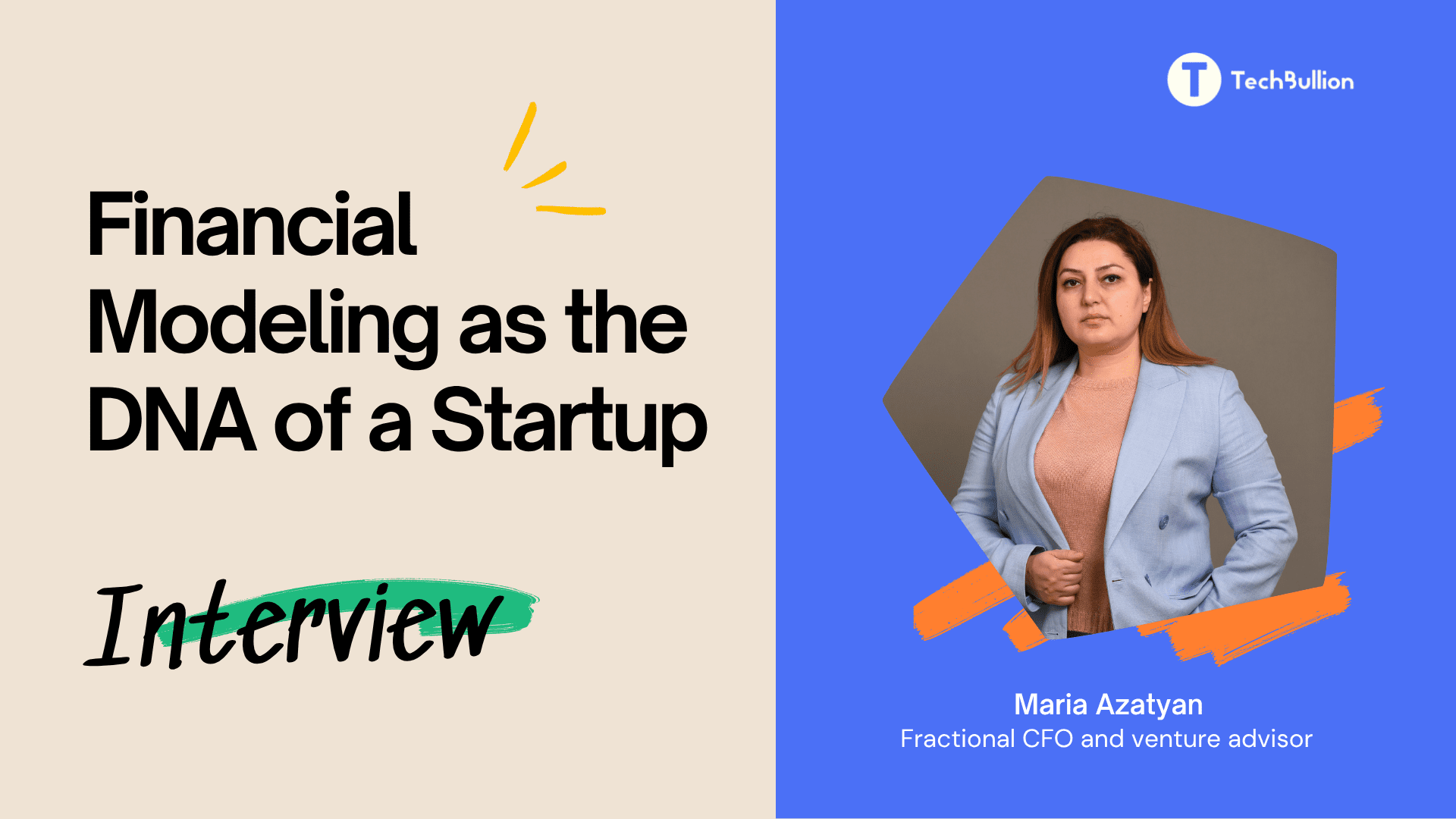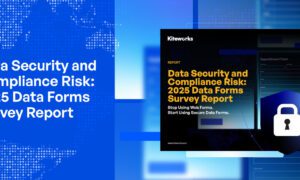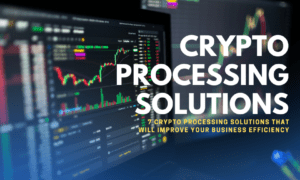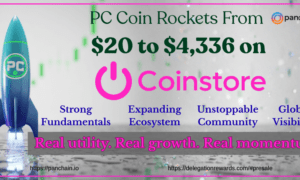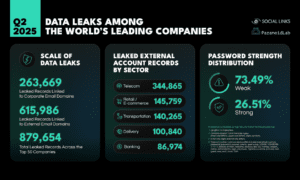Maria Azatyan is a CFO and venture advisor with more than twenty years in finance, investments, management accounting, and strategic consulting. She has guided AI, SpaceTech, Robotics, and Data Science startups through modeling, reporting, and investment preparation, and she founded Maro Academy, an education platform for international certifications including CFA, CPA, EA, and BAR. Her methodology for financial modeling and for detecting risk and fraud in DeepTech and AI startups has been adopted by early-stage teams and investors, and she has contributed to the financial transformation of R&D organizations, including a 2022 project at Alango Armenia that returned the business to profitability above a 65% margin. She participates in SelectUSA Summit and other international forums, advises accelerators and funds, and writes actively on LinkedIn about the new space economy, AI, and startup finance. These outstanding achievements and a record of practical results underpin a profile often described by peers as evidence of extraordinary abilities in startup finance and strategy.
You have 20+ years across finance, investments, management accounting, and strategic consulting. What parts of that experience became the foundation for your work with DeepTech and AI startups today?
[MA]: The first layer is discipline: management accounting that actually explains operations rather than just categorizes costs. I learned to connect line items to behavior—how engineering sprints drive expenses, how customer behavior shows up in deferred revenue, how seasonality distorts cohort views. The second layer is investment logic. I spent years translating messy narratives into capital-ready stories: risk, return, timing, and milestones. That made me comfortable designing models that investors can interrogate in five minutes and founders can update in ten. The third is consulting structure. Early DeepTech companies don’t need theatrics; they need a clear path: data hygiene, unit economics by segment, and scenario analysis that survives stress. When those three layers meet—discipline, capital logic, structure—the numbers stop being slides and start steering product, hiring, and go-to-market. That’s where my work lives now.
Your portfolio includes AI, SpaceTech, Robotics, and Data Science startups. How does your modeling approach adapt when the technology has long R&D cycles or uncertain revenue timing, as in SpaceTech?
[MA]: I separate physics from finance—but I link them. In SpaceTech, timing dominates. So I map technical milestones to cash events before I ever forecast revenue. Grants, payload integration windows, regulatory reviews—each becomes a dated assumption that drives burn and capital needs. Then I build unit economics at the level that matters: mission segment, customer type, or payload class. I don’t smooth uncertainty; I show it. The model exposes how a six-month slip in a test campaign changes break-even, how a different launch provider shifts gross margin after logistics, and how grant tranches cushion risk. Founders see the levers they can actually pull—scope, cadence, or pricing. Investors see that uncertainty is priced in, not hidden. That honesty shortens diligence because everyone can challenge assumptions in one place and watch scenarios cascade through the model.
You founded Maro Academy to prepare professionals for certifications like CFA, CPA, EA, and BAR. What did you learn from building an education platform that you now apply to finance leadership in startups?
[MA]: Curriculum design taught me to be ruthless about prerequisites. In education, if the base concept is shaky, every advanced topic collapses. Startups are identical. Before growth dashboards, I align on definitions—revenue recognition rules, cohort cuts, cost allocation—so we stop arguing about the dictionary. The second lesson is pacing. Learners progress by feedback loops; founders do too. I embed tiny wins into the finance roadmap: one-sheet income statements, a clean cap table, then an 18-month cash forecast. Each win buys trust for the next level of sophistication. Third, assessment. In the Academy we measure outcomes, not just attendance. With teams, I check whether metrics change behavior. If “retention by segment” doesn’t shift product or pricing, it’s decoration. Education forced me to design for action, and that mindset keeps startup finance practical.
Your methodology focuses on detecting financial risk and potential fraud in DeepTech and AI startups. What are the early signals you look for, and how do you operationalize that in fast-moving teams?
[MA]: I start with reconciliation that’s painful on purpose. One source of truth, one workbook of raw inputs and formulas, everything else derived. When numbers disagree, I don’t average; I trace. Early signals: revenue booked without clear delivery evidence, capitalized R&D that grows faster than headcount, and vendor concentration that doesn’t match procurement policy. In AI products, I watch inference costs versus pricing and whether experimentation runs get quietly expensed as “marketing.” For operationalization, I use checklists and visual maps—who can change a metric, who approves, what logs exist. Then I add anomaly flags: margin by acquisition channel, cohort decay patterns, and sudden shifts in recognition. Teams see the same dashboard investors see, and they can reproduce every number. That transparency deters bad behavior and surfaces honest mistakes before they become fundraising problems.
In 2022 you led a financial transformation at Alango Armenia that returned the operation to profitability with margin above 65%. What were the concrete levers that moved the number?
[MA]: Three levers. First, cost architecture. We re-segmented costs by product line and function, which exposed under-priced services and a support load that didn’t belong to R&D. Second, revenue quality. We adjusted contracts to align delivery, acceptance, and billing—no more cash without clarity. That stabilized gross margin because we stopped masking work-in-progress as revenue. Third, incentive alignment. Engineers received targets tied to release readiness and defect rates, not just sprint velocity, so we cut rework. The comp plan recognized the cost of delays in terms the team respected. None of this was glamorous. It was persistent cleanup, weekly visibility, and one data model everyone trusted. Once the structure held, efficiency lifted naturally. Profitability wasn’t a surprise; it was the result of a system that made good decisions easier.
You frequently advise accelerators and funds on growth, strategy, and investment readiness. When a startup asks for a pre-diligence checklist, what do you insist on completing before they contact investors?
[MA]: I avoid encyclopedias; I insist on essentials that change outcomes. First, a clean cap table with clarity on vesting and any side letters. Second, an 18-month integrated model—P&L, cash flow, hiring plan—where investors can adjust three assumptions and see the effects instantly. Third, cohort-based retention by segment and by acquisition channel; averages hide risk. Fourth, documentation of revenue recognition and pricing logic. Finally, a short narrative that connects product milestones to capital needs and to measurable traction. I’ll review legal hygiene and IP basics, but the heart is consistency: every artifact must tell the same story. When teams do this work, investor conversations move from interrogation to collaboration. Time compresses, and term sheets arrive from people who already understand the engine they’re financing.
You participate in SelectUSA Summit and similar international events. How do those forums actually influence your day-to-day work with founders?
[MA]: They compress networks and reality-check assumptions. At those events I test pricing, compare regulatory timelines, and learn what metrics are resonating with current capital. That becomes a calibration layer in models. If U.S. customers are paying a premium for reliability over raw performance in a niche robotics segment, I’ll reflect that in the value narrative and in discounts. If grant dynamics shift, I’ll change the order of milestones to unlock tranches earlier. And relationships matter. When a founder can point to a warm conversation with a potential partner or an agency contact, I can anchor timelines in more than hope. Those forums don’t replace execution, but they sharpen it. Founders leave with a narrower target and fewer illusions, which makes their next quarter more productive.
Your academic background includes a Master’s in Finance and Credit, an ongoing MBA comparing SpaceTech and traditional startup structures, and certificates from MIT on the New Space Economy and AI, plus an EY CFO certification. How do you translate academic rigor into startup speed?
[MA]: Methodology first; jargon last. The MBA research forces me to define structure—capital intensity, development gates, and commercialization cycles—then test where classic startup playbooks fail. MIT’s New Space Economy work gives me a taxonomy for business models that look similar on a slide but behave differently in cash flow. The EY CFO certification was a reminder that control environments exist to make decisions safer, not slower. I don’t bring lectures to founders. I bring tools: evidence thresholds for launching a new SKU, a decision tree for build-versus-partner, and statistical guardrails for interpreting cohort noise. Academic discipline helps me choose the few metrics that matter for a given stage. Then we move fast inside that frame, because speed without design just recreates the same argument every month.
You teach courses in international reporting and financial analytics. What recurring misunderstandings do you correct for technical founders?
[MA]: Revenue recognition is the first. Founders often see “invoice sent” and assume “revenue earned.” Under IFRS or U.S. GAAP, it depends on performance obligations, not enthusiasm. The second is capitalization. Capitalizing everything that looks like R&D feels efficient until amortization buries gross margin and misleads hiring plans. The third is cohort logic. You can’t fix retention with averages; you fix it by understanding who comes back, why, and at what cost. I translate those topics with examples from their own data. When founders see how misclassification distorts runway or how churn in a single segment cancels paid growth, the conversation changes from debate to design. Teaching trains me to make standards practical, which is precisely what they need.
Your LinkedIn writing shapes conversations around the new space economy, AI, and startup finance. What themes keep returning in your practice that you also emphasize publicly?
[MA]: Three themes recur. First, transparency is a performance tool. When teams and investors can audit a number to its source in one step, behavior improves because excuses disappear. Second, channel economics matter as much as product economics. If paid acquisition produces half the margin of organic or partner channels, growth can bankrupt you with a smile. Third, retention is the quiet hero. I push founders to measure retention by segment and cohort age because it reveals whether product value compounds. On LinkedIn I’m not aiming for slogans. I’m trying to give founders prompts they can test this week. If a post helps a CFO cut a useless dashboard or forces a pricing experiment, it’s done its job.
Your work often includes mini-audits and stress testing before a round. How do you run those sprints without paralyzing a team that still needs to ship product?
[MA]: I time-box and stage. Week one is data hygiene: we define sources, clean joins, and lock naming. Week two is the integrated model with three scenarios and a hiring spine. Week three is narrative and artifacts: a concise memo, the deck’s financial skeleton, and a live dashboard investors can click. Shipping continues because I don’t ask for perfect history; I ask for a trustworthy present. I’ll mark gaps for follow-up instead of pausing releases. The secret is focus. Most fundraising pain comes from contradictions, not from missing a chart. When every artifact aligns, teams feel lighter. Investors feel respected. Product keeps moving.
You are a member of AmCham Armenia and a participant in Feminno, a community of women in STEM. How have these communities influenced your leadership and mentoring style?
[MA]: They keep me close to reality. AmCham connects finance conversations to policy, tax, and trade details that change the economics of expansion. Feminno puts me in rooms with women who build real technology under real constraints. I borrow their pragmatism. When I mentor, I avoid generalities and ask, “What did you change last sprint? What would break if demand doubled?” Communities remind me that leadership is logistics: removing friction, setting standards, and holding a calm line when things wobble. They also expand the pool of reference points for young professionals. Seeing peers with different paths reduces the pressure to perform a myth and encourages people to build competence.
You receive letters of recommendation from AI partners, venture investors, the Ministry of Economy, the Armenian Association of Science, and civic leaders including a former Glendale mayor. What does external validation change inside a startup?
[MA]: It accelerates trust, but it doesn’t replace proof. For founders, credible references lower the cost of doubt. A fund partner’s note won’t fix retention, yet it can buy the extra meeting where we demonstrate improvement. For my role, those letters encode expectations: clear decisions, honest models, and responsiveness. Internally, they set a standard—if we want external confidence, we must earn it weekly. I tell teams that validation is a door, not a guarantee. Once you’re inside, performance speaks. Still, in fundraising, doors matter. When an investor hears that your finance lead is known for clean audits and explainable models, diligence starts on the front foot.
You are building a financial platform that automates startup analysis and adds AI tools for risk and growth assessment. What problems will the first release solve for founders and investors?
[MA]: Two problems: inconsistency and latency. Founders struggle to keep numbers coherent across spreadsheets, BI tools, and decks. Investors struggle to see what changed and why. The platform will unify sources, enforce definitions, and surface anomalies automatically. It will explain where a number comes from, what drives it, and what changed since last week. On the risk side, it flags mismatches: revenue recognized before delivery evidence, margins that diverge by channel, or cohort decay that contradicts stated retention. On growth, it tests scenarios—pricing, hiring, go-to-market mix—and shows the effect on runway and break-even. It’s not replacing judgment; it’s compressing the time from question to answer. The goal is a shared model that educates the team and satisfies an investor in the same session.
Your publications span 2022 to 2024, including work on correlation between financial efficiency and technological innovation, early anomaly detection, scaling risk, explainable models in due diligence, contribution margin versus gross margin, inefficiency identification in IT and AI projects, and infrastructure cost optimization. Which idea from this research changed your practice the most?
[MA]: Contribution margin by acquisition channel. It sounds technical; it changes behavior. Many teams celebrate blended gross margin and miss that paid channels can destroy contribution after variable costs unique to that channel. When we reframe around contribution, marketing plans shift, retention gets budget, and sales incentives stop rewarding unprofitable deals. The other shift is explainability. In diligence, an elegant model that no one understands slows everything. My research on explainable financial models pushed me to reduce hidden logic and expose assumptions. Investors don’t need magic; they need clarity. That research gave me a checklist I now apply everywhere—from naming conventions to how we present scenario deltas.
You often help teams prepare for rounds from pre-seed to Series A. How do you know a startup is actually ready to raise?
[MA]: I look for coherence. Growth that a founder can explain with data, retention that holds for the right segments, a CAC trend that doesn’t spike with spend, and a cash runway of at least six months. The model must update fast and survive a skeptic’s three edits. I also watch behavior in meetings: whether a CTO can walk an investor through unit economics without me, whether a CEO answers timing questions with dates not adjectives. Ready doesn’t mean perfect; it means understandable and resilient. When those signals align, the round is worth the time—for everyone involved.
You consult on detecting financial violations in startups and design visual guides and checklists for teams. What makes a checklist effective in a culture that values speed?
[MA]: It has to be visible, short, and tied to consequences. I use step-by-step flows embedded where work happens: inside the model, inside the CRM, inside procurement tools. Each step names the owner, the evidence, and the timestamp. If something blocks, the person clicking “approve” sees the risk they’re accepting. Speed and compliance don’t fight when the checklist is the fastest path to a clean decision. The moment a founder sees that fifteen minutes of structure prevents two weeks of rework or a failed audit, the checklist earns respect. That’s the threshold I aim for.
You are an active LinkedIn blogger. What advice do you give CFOs who want to contribute publicly without drifting into abstraction?
[MA]: Write from cases, not concepts. Share one metric you misread last month and how you corrected it. Show a model screenshot—anonymized—and ask for feedback. Post the hiring plan logic you used and one thing you would change. Public writing is a lab for clarity. If your peers can’t follow your assumption chain in a short post, investors won’t follow it in diligence. The benefit isn’t likes; it’s sharper thinking. And when founders see practical work, they trust you faster.
You often receive invitations to judge or sit on expert panels for competitions and accelerators. What do you look for in the first five minutes of a startup pitch?
[MA]: Connection between technology and unit economics. If a team can describe the technical edge in one paragraph and immediately show how it changes retention, margin, or payback, I lean in. If they can’t connect the two, we’ll spend the meeting translating. I also listen for specificity—dates, segments, constraints. Vague ambition is common; constraints are where strategies form. Finally, I watch how the team handles uncertainty. A founder who can say, “Here’s what we know, here’s what we’re testing next, here’s how we’ll decide,” saves everyone time. Five minutes is enough to see whether a company is ready to be taught by the market.
Many readers ask about career arcs. What moved you from corporate roles into startup work focused on AI and DeepTech?
[MA]: Curiosity and accountability. In corporate settings I learned scale and rigor, but I missed the proximity to cause and effect. In startups, decisions show up in the numbers next month. I wanted that loop. AI and DeepTech attracted me because they force finance to learn technology, not observe it. You can’t price inference without understanding architecture; you can’t plan SpaceTech without respecting physics. The work is demanding and sometimes messy. That’s part of the appeal. I like building systems that stand up when things shake.
What would you tell a first-time founder who worries that finance will slow them down?
[MA]: Finance slows you down only when it’s ornamental. If the model explains decisions, it speeds you up because debates end faster. Start with a shared glossary, a single source of truth, and three scenarios. Update weekly. Use retention and contribution margin by channel as your early reality checks. Keep the deck simple and the data open. When finance serves the product and the customer, it becomes a lever, not a hurdle. That’s what I try to build with every team.
Maria Azatyan’s work sits at the intersection of modeling, evidence, and practical execution. She combines education, advisory, and operating experience to prepare founders for investor conversations, to design transparent systems, and to keep teams focused on the economics that matter. Her outstanding achievements across AI, SpaceTech, and Robotics, alongside research on anomaly detection, explainable models, and contribution margin, reflect extraordinary abilities applied to real constraints. For teams aiming to raise or to grow responsibly, her approach offers a way to align technology, product, and capital without losing speed.

